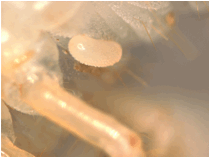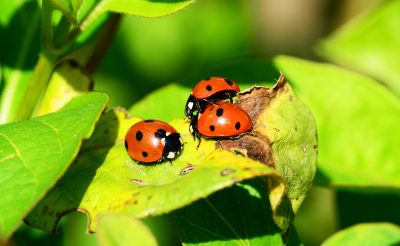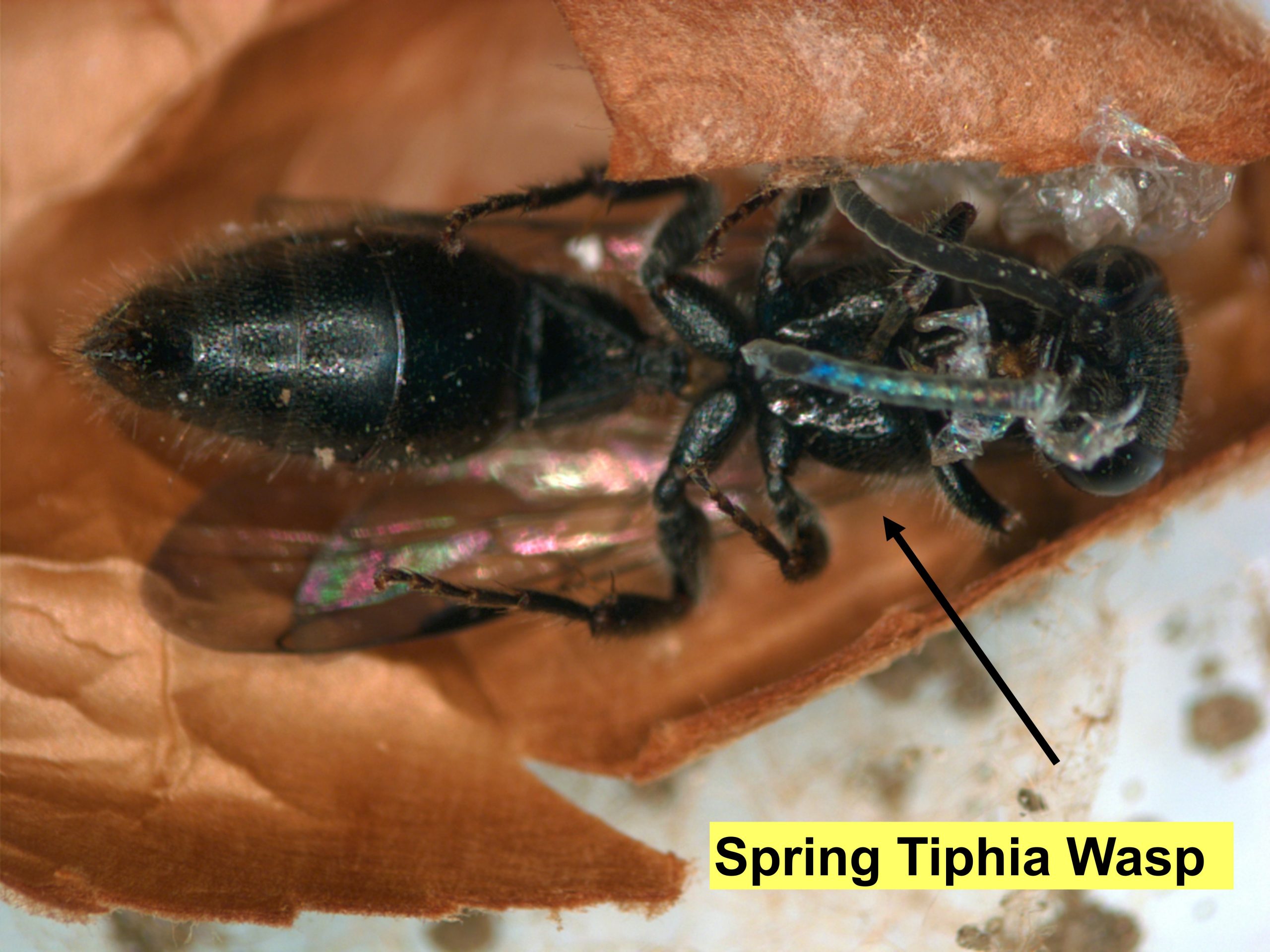Beneficial insects that are used as biological control agents assist in controlling pest populations through predation and parasitoidism. Attracting these beneficials helps to naturally maintain a manageable level of pest levels. The goal of IPM with these types of beneficials is not to achieve complete removal of pests, but instead to naturally control pest levels to a non-disruptive level. Environments with this method of pest prevention have lower costs without the need to external inputs to the system such as insecticides. As well, the presence of biological control agents will increase with the resistance of your environment to the introduction of pests. Click on the images below to find out more information on specific insects that fill this important role in our ecosystems.
Insect Parasitoids

Beneficial parasitoids are insects that develop from a larvae to an adult by consuming a single insect host. The parasitoid lays and egg on the inside or outside of the host insect, but keeps the host alive (see picture to the right of an egg on a beetle larva). The offspring feeds on the host's organs, leading to its death. The parasitoid will develop to adulthood, where it will then search for another host for its offspring, repeating the cycle. These insects are harmless to humans and are generally small in size. Many species of this insect group include wasps, flies, and some beetles and are often confused for pests. The presence of these beneficials should be encouraged. For more information on plants that attract parasitoids, visit the Insectary Plants page here.

Spring Tiphia
Parasitoid of Japanese Spring Beetles

Summer Tiphia
Parasitoid of Japanese Spring Beetles

Spring Tiphia
Parasitoid of Japanese Spring Beetles
Insect Predators

Insect predators consume their pest insect prey immediately. While parasitoids often hunt specific species of host insects, many insect predators such as the praying mantis or dragonflies are generalists who will consume a wide variety of pests. Insect predators tend to be larger than parasitoids and rely on tactics such as ambushing, speed, or strength. Insect predators are incredibly important as they can consume remarkable quantities of insects in their lifetime, such as the Asiatic lady beetle, which can eat up to 5,000 aphids in its life time.

Spring Tiphia
Parasitoid of Japanese Spring Beetles

Spring Tiphia
Parasitoid of Japanese Spring Beetles

Spring Tiphia
Parasitoid of Japanese Spring Beetles

Spring Tiphia
Parasitoid of Japanese Spring Beetles

Spring Tiphia
Parasitoid of Japanese Spring Beetles

